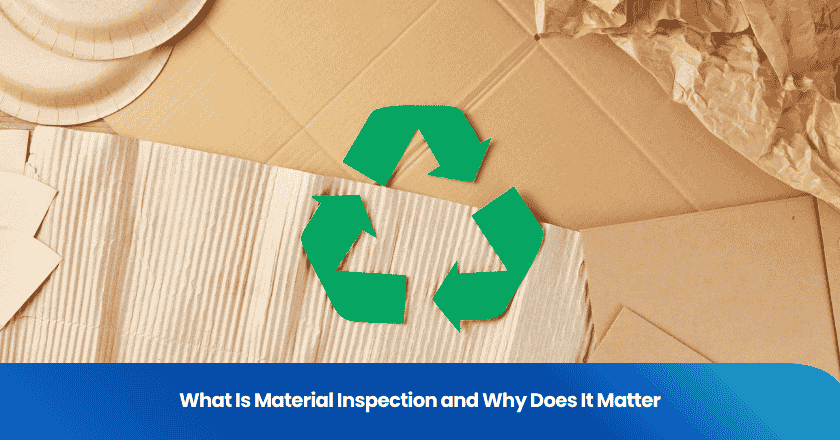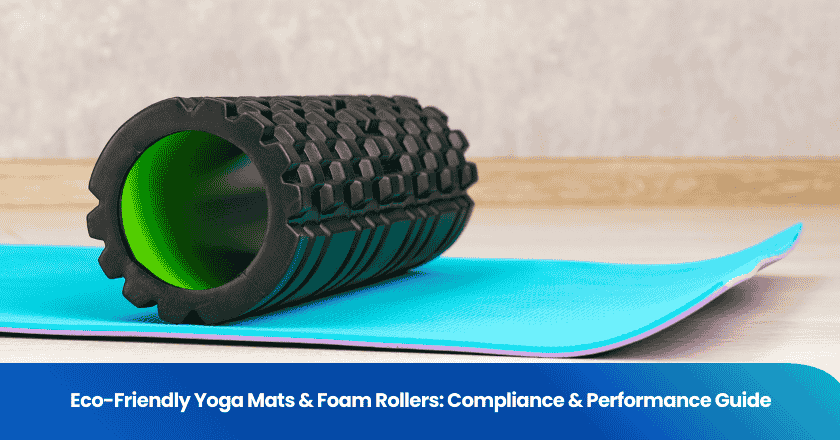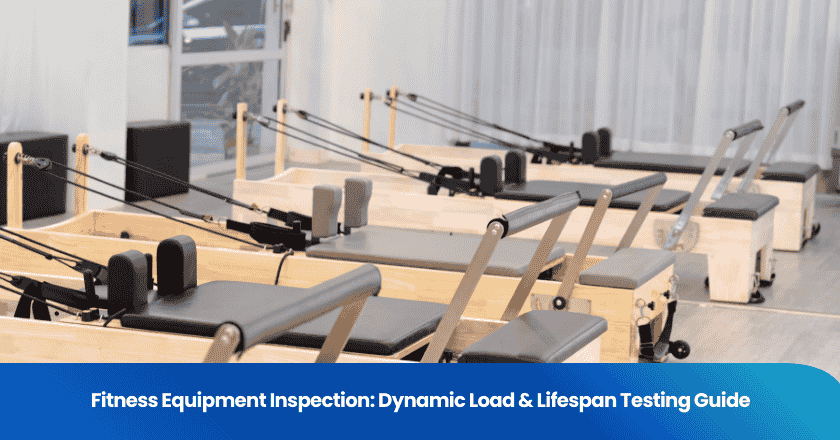
Material inspection stands as a crucial step in your production process. You use inspection to verify that every material meets your standards for safety, quality, and reliability. As an inspector, you help prevent issues that can disrupt the supply chain and affect end users. If you overlook material inspection, you risk inconsistent quality, product recalls, and increased costs.
- Material inspection helps you identify defects early, reducing safety hazards.
- Inadequate inspection can lead to financial losses and customer complaints.
- Quality defect-related costs can rise by up to 30% when inspection falls short.
By prioritizing thorough inspection, you protect your business and ensure reliable products reach your customers.
Key Takeaways
- Material inspection ensures that all materials meet safety and quality standards, preventing defects before production starts.
- Regular inspections at different stages of production help catch issues early, saving time and reducing costs associated with recalls.
- Using a standard inspection checklist keeps the process organized and helps maintain compliance with industry regulations.
- Automation in inspections can improve efficiency, reduce human error, and provide real-time data for better decision-making.
- Investing in thorough material testing builds customer trust and enhances your brand's reputation by ensuring reliable products.
Material Inspection Overview
Objectives and Key Elements
You rely on material inspection to confirm that every material meets your standards before it enters production. This process involves identifying, measuring, and testing the physical and mechanical properties of materials. You use these steps to determine if materials conform to required standards, specifications, or contractual requirements. By doing so, you ensure quality, safety, and durability in your products.
Your main objective as an inspector is to meet customer requirements and prevent defective products from reaching the market. You achieve this by conducting quality inspection at every stage of production. This approach minimizes the risk of product failure and supports your commitment to delivering reliable results.
A standard material inspection checklist helps you stay organized and thorough. The checklist covers several key elements, which you can see in the table below:
| Key Element | Description |
|---|---|
| Product requirements | Includes material and construction, weight and dimension, color, and labeling and markings. |
| Packaging requirements | Focuses on packaging appearance, labeling requirements for cartons, materials for packaging, and regulations. |
| Regulations and testing | Involves compliance tests such as drop tests, moisture content tests, and functional testing. |
| Defect classification | Classifies defects into critical, major, minor, and hold categories, indicating tolerance levels. |
You also need to consider international standards during quality inspection. These standards provide a framework for consistent and reliable manufacturing. They help you maintain safety, meet regulatory compliance, and build trust with customers and regulatory bodies.
Tip: Always update your inspection checklist to reflect the latest industry standards and regulations. This practice helps you avoid compliance issues and ensures your materials testing process remains effective.
Types of Material Inspection
You encounter several types of material inspection throughout the manufacturing process. Each type serves a specific purpose and helps you maintain control over quality inspection and materials testing.
- Pre-Production Inspection (PPI): You use this inspection to verify raw materials and components before production begins. This step helps you catch issues early and avoid costly mistakes.
- During Production Inspection (DPI): You perform this inspection while production is underway. It allows you to monitor quality and address problems before they escalate.
- Pre-Shipment Inspection (PSI): You conduct this inspection after production but before shipping. It ensures that finished products meet your quality standards and customer expectations.
- Container Loading/Unloading Supervision: You oversee the loading or unloading process to confirm that products are handled correctly and remain undamaged during transit.
Different industries require unique inspection methods. For example, in aerospace, you use optical and video inspection to check aircraft engines and structural spaces. In automotive, you rely on similar techniques to evaluate engine cylinders and transmissions. In electronics, you use microscopic inspection to examine circuit boards and solder joints for faults.
You also see new trends shaping the future of materials testing and quality inspection. Advanced technologies such as AI, digital twins, and multimodal inspection systems are becoming more common. Automation and data-driven approaches help you improve accuracy and efficiency. These innovations make it easier for you to perform comprehensive materials testing, even when skilled professionals are in short supply.
You must understand the types of materials testing available to you. Mechanical, chemical, and non-destructive testing methods each play a role in your quality inspection process. By combining these methods, you gain a complete picture of material performance and reliability.
Note: Staying informed about new inspection technologies and international standards helps you maintain a competitive edge and deliver high-quality products.
Importance of Materials Testing
Safety and Compliance
You play a critical role in ensuring that every product meets strict safety and compliance requirements. Materials testing forms the backbone of this process. When you conduct thorough material testing, you confirm that each component aligns with product quality standards and regulatory guidelines. This step protects both your business and your customers from potential hazards.
Many industries rely on established standards to guide their quality inspection processes. For example, ASTM standards set clear technical specifications for product safety, quality, and performance. These standards often become mandatory when referenced in national regulations. You might encounter specific ASTM standards such as:
- ASTM F963-23 for toy safety
- ASTM F2413-18 for protective footwear
- ASTM F2923-20 for children’s jewelry
By following these standards, you help prevent product failures and ensure that your products remain safe for users. You also support regulatory compliance, which shields your business from penalties and legal disputes. Quality inspection based on these standards builds trust with customers and regulatory bodies.
Note: Consistent adherence to product quality standards through materials testing strengthens your reputation and reduces the risk of compliance issues.
Preventing Failures and Defects
You understand that defect detection is essential for maintaining high product quality standards. Materials testing allows you to identify weaknesses before they become costly problems. When you implement incoming quality control, you inspect raw materials before they enter production. This proactive approach helps you catch defects early, ensuring that only high-quality materials move forward in the process.
Incoming inspections use systematic processes, control charts, and acceptance sampling to manage the quality of materials. These methods reduce the risk of defects in the final product. You also use coatings and surface treatments to enhance durability and protect against environmental factors. These steps further support your efforts to maintain product quality standards.
Investing in materials testing brings significant benefits to your business. You reduce the likelihood of warranty claims and product recalls by identifying defects early. Comprehensive quality inspection and rigorous testing improve product reliability and minimize financial losses. You also strengthen your defense against liability claims by adhering to safety standards.
The economic impact of inadequate material inspection can be severe. Consider the following table, which outlines the risks you face when you neglect proper inspection:
| Impact Type | Description |
|---|---|
| Operational Inefficiencies | Bottlenecks in production, delays, and increased labor costs due to rework and interruptions. |
| Financial Losses | Costly rework, product recalls, and legal disputes that reduce profit margins. |
| Compliance Issues | Higher risk of non-compliance, leading to penalties, fines, and remediation costs. |
| Reputation Damage | Recalls and negative media coverage that erode customer trust and damage your reputation. |
| Employee Morale | Frustration among employees, decreased motivation, and higher turnover rates. |
| Customer Trust | Difficulty attracting and retaining clients, impacting growth and sustainability in a competitive market. |
You serve as the inspector who ensures that every stage of production meets strict quality inspection criteria. By prioritizing the importance of materials testing, you protect your business from operational setbacks and safeguard your reputation. You also create a safer experience for end users and build long-term trust with your customers.
Tip: Regularly review and update your quality inspection procedures to keep pace with evolving product quality standards and industry best practices.
Material Testing Process
Steps in Materials Testing
You follow a structured process during materials testing to ensure reliable results. Each step serves a specific purpose and helps you maintain high standards in material inspection. The table below outlines the typical steps you take when testing industrial materials:
| Step | Objective | Process Description |
|---|---|---|
| Pre-Pour Testing | Measure air content and density | You measure air content using a pressure method and calculate density by weighing a known volume sample. |
| Post-Pour Testing | Verify compressive and flexural strength | You cast samples and test them at set intervals, then apply loads to beams until failure. |
| Drilled Core Testing | Assess in-place compressive strength | You drill cores from the slab and test them in a lab for compressive strength. |
| Soil Testing | Determine soil properties for construction | You collect soil samples from different depths for analysis. |
| Field Testing | Measure soil density and strength | You perform tests like the Standard Penetration Test and In-Situ Density Test on-site. |
| Laboratory Testing | Assess plasticity and compaction | You conduct Atterberg Limits and Proctor Tests to determine moisture and density. |
| Post-Testing Analysis | Compile data and make recommendations | You analyze all results and prepare a report with design recommendations. |
Tip: Consistency in your testing process improves the accuracy of your materials testing results. Variations in load cell accuracy, measurement resolution, or environmental conditions can affect your data. Always monitor these factors during quality inspection.
Tools and Techniques
You rely on a range of tools and techniques to carry out effective materials testing. The right equipment ensures you gather accurate data during each inspection. Here are some of the most common tools and their uses:
- Universal Testing Machines: Perform tensile, compression, and bending tests.
- Hardness Testers: Measure resistance to indentation using methods like Brinell, Rockwell, and Vickers.
- Impact Testers: Assess how much energy a material absorbs during sudden impacts.
- Creep and Fatigue Testing Machines: Evaluate long-term deformation and durability under repeated loading.
- Thermal Analysis Instruments: Measure how materials respond to temperature changes.
- Electrical Testing Equipment: Check properties such as conductivity.
- Non-Destructive Testing Equipment: Detect internal defects without damaging the material.
You also use specialized fixtures and accessories, such as tensile grips, compression platens, and environmental chambers, to simulate real-world conditions. Non-destructive testing offers several advantages, including reduced material waste, cost efficiency, and minimal downtime. However, you must interpret results carefully, as these methods often provide qualitative rather than quantitative data.
As an inspector, you play a key role in selecting the right tools and maintaining consistency in your materials testing approach. This attention to detail supports your overall quality inspection strategy and helps you deliver reliable results in every material inspection.
Quality Inspection in Manufacturing
Role in Product Quality
You play a vital role in maintaining product quality through quality inspection. Every time you perform materials testing, you help identify defects before they reach your customers. This process supports your quality management goals and reduces the risk of costly recalls. When you focus on the importance of quality inspection, you protect your business from financial losses and reputation damage.
The impact of quality inspection on product quality becomes clear when you look at the numbers:
| Evidence Type | Description |
|---|---|
| Cost of Poor Quality | The Cost of Poor Quality (COPQ) can reach 10% to 20% of annual revenue, showing the financial risks. |
| Product Recalls | Over 40% of manufacturers using manual inspection face frequent recalls, highlighting inspection value. |
| Continuous Improvement | Inspection data supports root cause analysis, reducing scrap, rework, and warranty claims. |
You use different types of quality inspection, such as visual checks, functional tests, and dimensional measurements, to ensure every product meets your standards. Inspection data helps you drive continuous improvement and supports your quality control inspector in making informed decisions. By using these methods, you reduce the risk of defects and improve customer satisfaction.
You also rely on key metrics to measure the effectiveness of your quality inspection process:
| Metric | Description |
|---|---|
| Yield | Measures process effectiveness, including first-pass yield. |
| Overall Equipment Effectiveness | Combines availability, performance, and quality to assess productivity. |
| Supplier Quality Metrics | Tracks supplier defect rates and incoming material quality. |
| Audit Metrics | Includes audit completion rates and non-compliance counts. |
These metrics guide your quality management strategy and help you identify areas for improvement.
Managing Supplier Quality
You know that supplier quality directly affects your final product. Effective material inspection at the supplier level ensures that only high-quality materials enter your production line. You start by setting clear quality expectations and documenting specifications for product quality, tolerances, and functional needs. You also define the types of quality inspection required and how often they should occur.
To manage supplier quality, you follow these steps:
- Conduct incoming inspections to verify raw materials meet your standards.
- Perform regular audits to maintain quality levels.
- Communicate with suppliers to address any issues quickly.
- Document inspection criteria and expectations for every supplier.
A strong supplier quality management system brings real benefits. You can reduce supplier defect rates by up to 70%, shorten lead times, and improve first-pass yield rates. You also see better communication with suppliers, which helps resolve problems faster. Organizations with robust systems experience 20% fewer defects in supplied materials, which lowers costs and protects your reputation.
Building an effective supplier quality management system takes effort, but it leads to higher product quality, satisfied customers, and long-term business success.
Your role as a quality control inspector is essential in this process. You ensure that every material inspection and materials testing step supports your quality management goals. By focusing on the importance of quality inspection, you create a reliable supply chain and deliver products that meet or exceed customer expectations.
Challenges in Material Inspection
Common Issues
You face several challenges during material inspection that can impact product quality and safety. Manual inspections often introduce human error, which can result in missed defects or inaccurate assessments. Sometimes, you encounter misaligned quality requirements between your team and suppliers, making it difficult to maintain consistent standards. Delayed or incomplete inspection reports slow down decision-making and create bottlenecks in production. Lack of real-time visibility into inspection results can prevent you from catching issues before they escalate.
- Human error in manual inspections
- Misaligned quality requirements between the brand and the supplier
- Delayed or incomplete inspection reports
- Lack of real-time visibility into inspection results
These issues can have serious consequences. Quality defects may introduce hidden dangers, such as electric shocks or fires in appliances. Undetected flaws in vehicles can lead to accidents and injuries. Poor sourcing and handling of raw materials often result in defects that compromise safety, functionality, and durability. Using low-quality materials can cause production delays and increase costs due to rework or scrap.
Quality defects undermine product reliability and erode trust in performance. In critical industries, such as aerospace, defects can compromise safety and endanger lives.
Solutions and Best Practices
You can overcome these challenges by adopting proven solutions and best practices. Automation and data-driven insights help you improve efficiency and product quality. Implementing standard digital inspection checklists ensures consistency and reduces human error. Monitoring findings, observations, and corrective actions during audits allows you to address recurring issues quickly. Prioritizing critical equipment and tasks based on urgency helps you focus your efforts where they matter most.
- Automate maintenance inspection reporting and notifications
- Identify recurring issues and adjust maintenance plans accordingly
- Schedule and notify auditors about upcoming inspections
- Expose critical weld areas for regular visual inspection
- Use non-destructive testing techniques to monitor tank conditions
Industry leaders achieve faster quality control by automating inspection processes, which reduces bottlenecks and maintains accuracy. Early detection of defects prevents faulty products from reaching later production stages, minimizing waste and rework costs. Automated quality checks speed up manufacturing and improve reliability and compliance. Predictive maintenance catches early wear indicators and material defects, reducing unexpected downtime.
As an inspector, you play a key role in implementing these best practices. By focusing on material inspection, material testing, and quality inspection, you help your organization deliver safer and more reliable products.
You drive safety, quality, and business success by prioritizing material inspection. Auditors rely on your inspections to verify financial records, uncover errors, and strengthen business outcomes. Consistent quality inspection throughout the supply chain boosts operational efficiency, as shown below:
| Description | Impact |
|---|---|
| Quality management system implementation | Increased production efficiency |
| Regular audits and goal tracking | Continuous improvement and effectiveness |
When you focus on material inspection, you gain measurable benefits:
- Improved asset longevity and reliability
- Enhanced customer confidence and brand loyalty
- Early issue detection, reducing costly recalls
- Cost savings and operational efficiency
Make material inspection a core part of your operations to ensure lasting success.
FAQ
What is the main goal of material inspection?
You aim to confirm that materials meet your quality, safety, and performance standards. This process helps you prevent defects and ensure reliable products reach your customers.
How often should you perform material inspections?
You should inspect materials at key stages: before production, during manufacturing, and before shipment. Regular checks help you catch issues early and maintain consistent quality.
Which tools do you need for effective material testing?
You use universal testing machines, hardness testers, and non-destructive testing equipment. These tools help you measure strength, durability, and detect hidden defects.
Why does incoming material inspection matter?
Incoming inspections let you catch defects before materials enter production. This step saves you time and money by preventing faulty products and reducing rework.
Can automation improve your inspection process?
Yes! Automation speeds up inspections, reduces human error, and provides real-time data. You gain better accuracy and efficiency, which supports higher product quality.
Grow your business with TradeAider Service
Click the button below to directly enter the TradeAider Service System. The simple steps from booking and payment to receiving reports are easy to operate.




